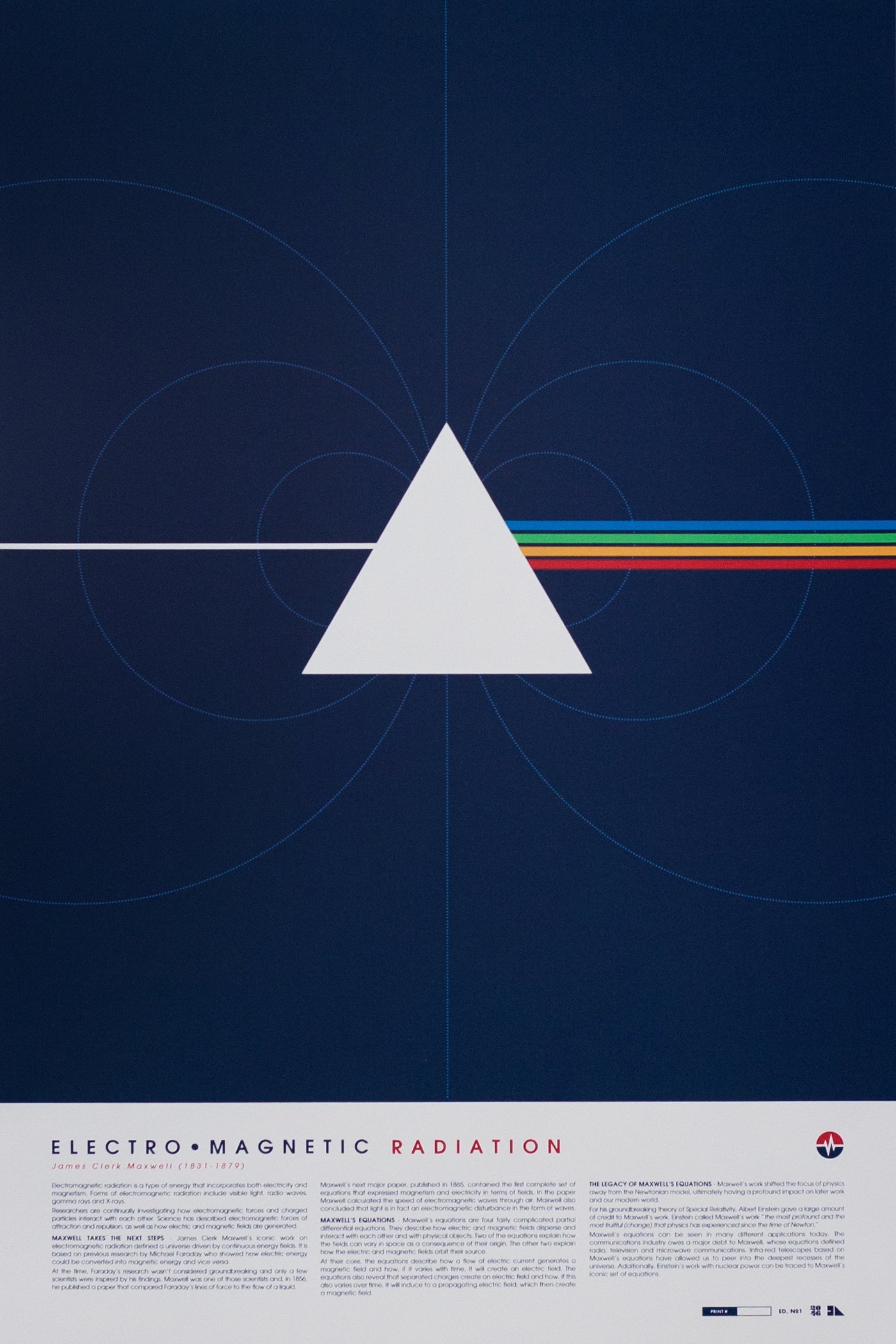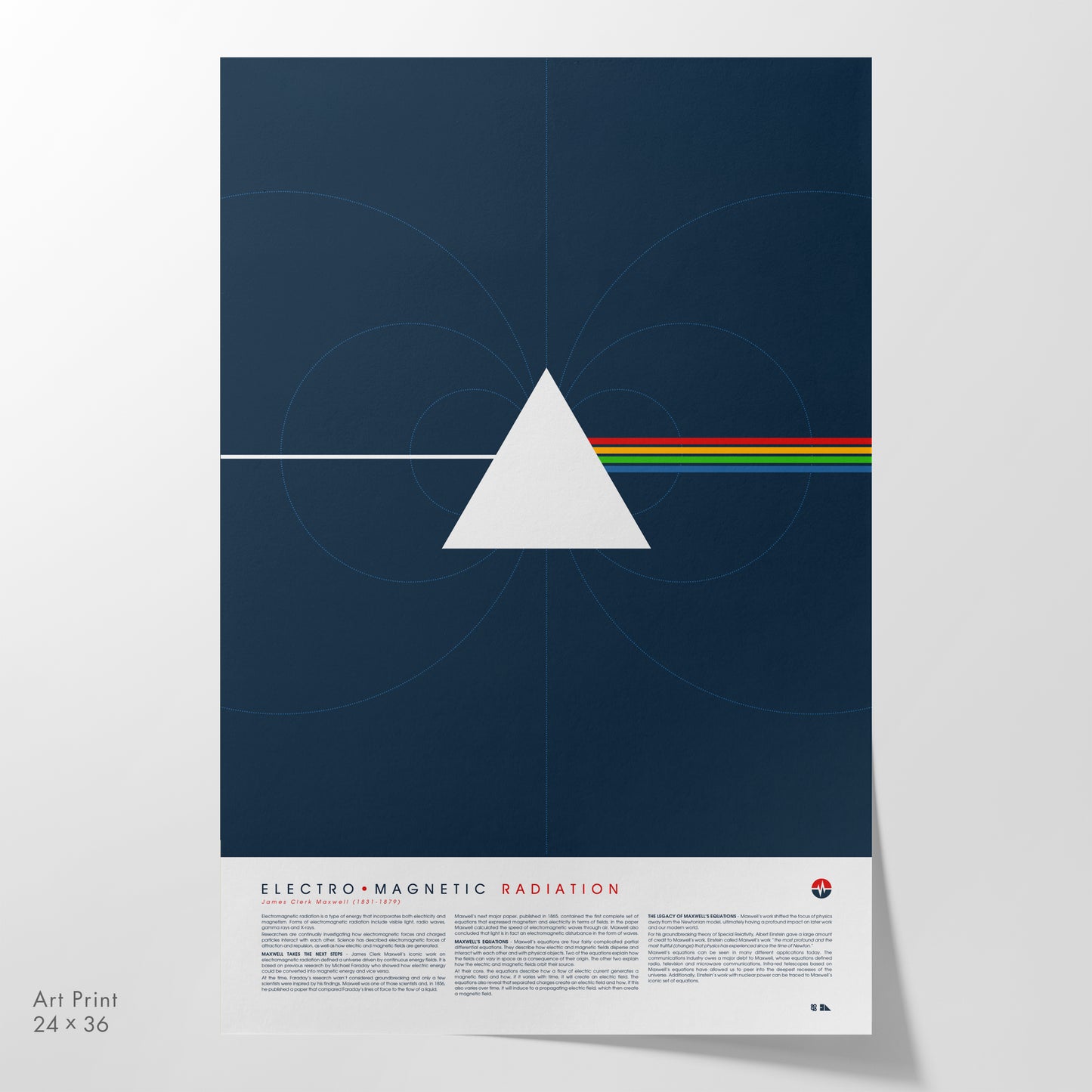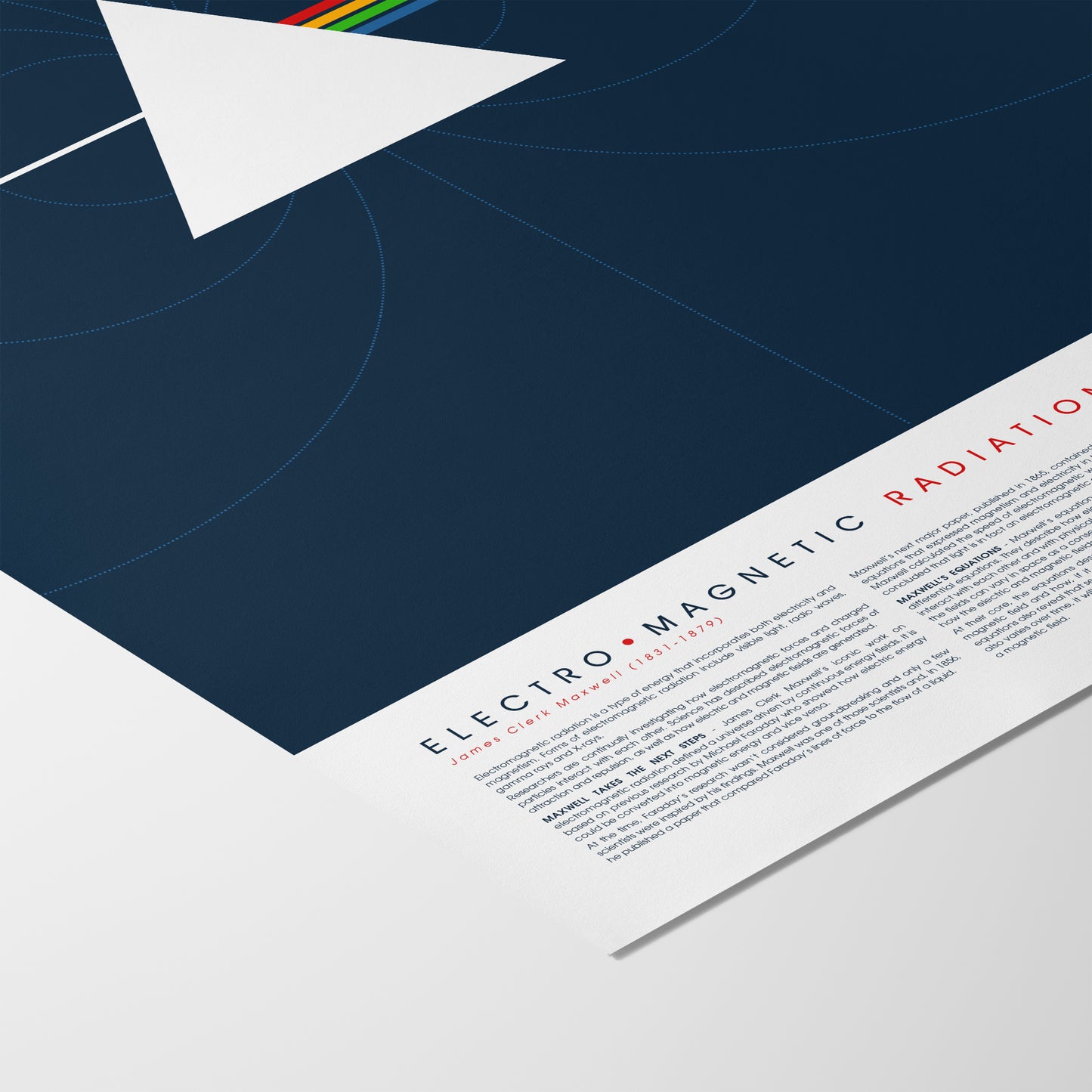Size Chart

Length unit:
Sizes may vary up to 1
HPSL: High Point Shoulder Length
BW: Bust Width (width of shirt measured 1" below armhole)
Couldn't load pickup availability
Electromagnetic radiation is a type of energy that incorporates both electricity and magnetism. Forms of electromagnetic radiation include visible light, radio waves, gamma rays and X-rays.
Researchers are continuously investigating how electromagnetic forces and charged particles interact with each others. Science has described electromagnetic forces of attraction and repulsion, as well as how electric and magnetic fields are generated.
James Clerk Maxwell’s iconic work on electromagnetic radiation defined, for the first time, a universe driven by continuous energy fields. It is based on previous research by Michael Faraday, who showed how electric energy could be converted into magnetic energy and vice versa.
At the time, Faraday’s research wasn’t considered groundbreaking and only a few scientists were inspired by his findings. Maxwell was one of those scientists, and in 1956, he published a paper that compared Faraday’s the lines of force to the flow of a liquid.
Maxwell next major paper, published in 1865, contained the first complete set of equations that expressed magnetism and electricity in terms of fields. The paper calculated the speed of electromagnetic waves through air using the only available data at the time. Maxwell also concluded that light is in fact an electromagnetic disturbance in the form of waves.
Maxwell’s equations are four fairly complicated partial differential equations.
They describe how electric and magnetic fields disperse, interact, and how they are affected by physical objects. Two of the equations explain how the fields can vary in space as a consequence of their origin, i.e. how electric fields coming from electric charges and magnetic fields that don’t come from magnetic monopoles can vary. The other two explain how the electric and magnetic fields orbit their source, i.e. how a magnetic field revolves around electric currents and shifting electric fields and how an electric field revolves around shifting magnetic fields.
At their core, the equations describe how a flow of electric current will generate a magnetic field and if the current flow varies with time, it will create an electric field. The equations also reveal that separated charges create an electric field, and if this is also changes over time, it will induce to a propagating electric field, which then creates a magnetic field.
Maxwell’s work shifted the focus of physics away from the Newtonian model, ultimately having a profound impact on later work and our modern world.
For his groundbreaking theory of Special Relativity, Albert Einstein gave a large amount of credit to Maxwell’s work. Einstein’s theory says the speed of light is constant, contradicting Newton’s theory that an observer moving toward a light source would see the speed of light increase.
Special Relativity was laid out as a field theory and it expands on the ideas originally laid out by Maxwell. Einstein called Maxwell’s work “the most profound and the most fruitful (change) that physics has experienced since the time of Newton.”
Maxwell’s equations can also be seen in many different applications today. The communications industry owes a major debt to Maxwell, whose equations defined radio, television and microwave communications. Infra-red telescopes based on Maxwell’s equations have allowed us to peer into the deepest recesses of the universe. And, Einstein’s work with nuclear power can be tracked back to the iconic set of equations.







Join us in making sure that everyone (friends, colleagues, family, and perfect strangers) is working to build public support and political will for the big solutions needed to address climate justice.
Pin Save the Climate donates 50% of profits to climate justice organizations.